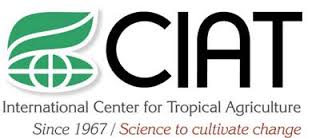Mission
To reduce hunger and poverty, and improve human nutrition in the tropics through research aimed at increasing the eco-efficiency of agriculture.
People
CIAT’s staff includes about 200 scientists. Supported by a wide array of donors, the Center collaborates with hundreds of partners to conduct high-quality research and translate the results into development impact. A Board of Trustees provides oversight of CIAT’s research and financial management.
Values
- Shared organizational ethic
- We respect each other, our partners, and the people who benefit from our work. We act with honesty, integrity, transparency, and environmental responsibility in all of our joint endeavors.
- Learning through partnerships
- We work efficiently and pragmatically together and with partners. Considering our diversity to be a key asset, we adapt readily to change and strive to improve our performance through continuous learning.
- Innovation for impact
- We develop innovative solutions to important challenges in tropical agriculture, resulting in major benefits for the people who support, participate in, and profit from our work.
Members:
Resources
Displaying 851 - 855 of 958Manejo de la sabana nativa en los Llanos Orientales de Colombia y Venezuela [conjunto audiotutorial]
Identification and analysis of agroproduction zones by the overlay-correlation method: the case of Costa Rica
Estrategias de trabajo sobre frijol para la sierra
The mechanisms of recognition between legume roots and rhizobia: Some implications for biological nitrogen fixation in the tropics
This paper reviews the experimental basis for the lectin-recognition hypothesis and considers ways in which the host/Rhizobium interaction might be manipulated to enhance the benefits of symbiotic nitrogen fixation in the tropics.
Energy cost of biological nitrogen fixation
Biological nitrogen (N2) fixation in both free-living and symbiotic organisms is an energy-requiring process dependent upon a supply of carbon and energy. In this paper the energy costs for N2 fixation and nodule respiration in symbiotic systems are compared with those of free-living N2-fixing systems, with the theoretical energy requierement for N2 fixation, and with the cost of utilization of combined N.


